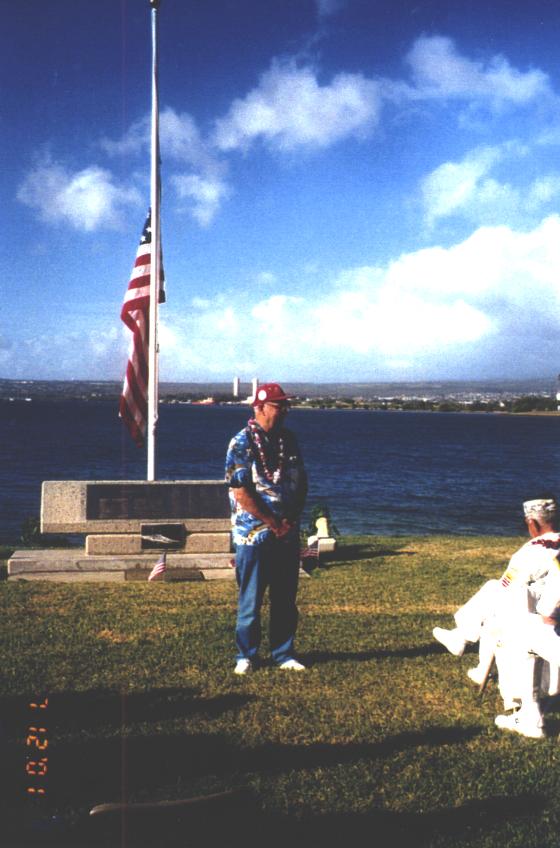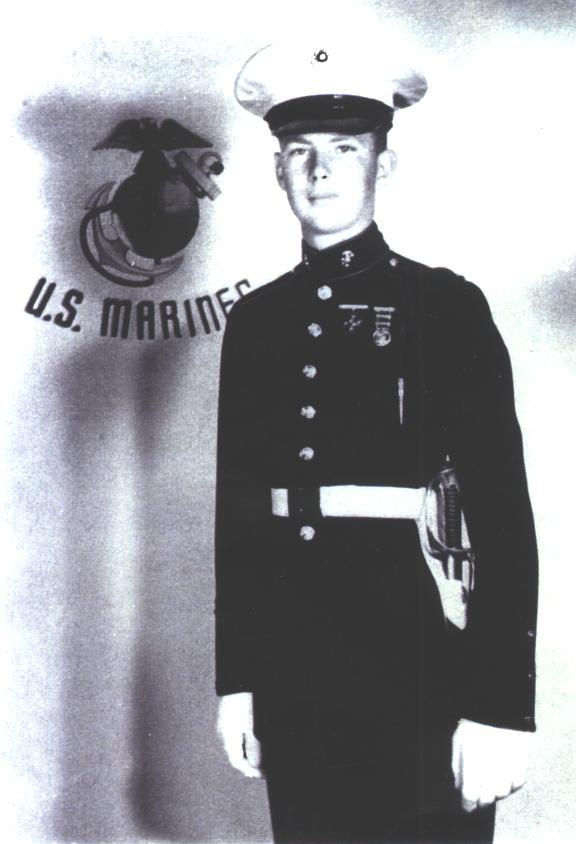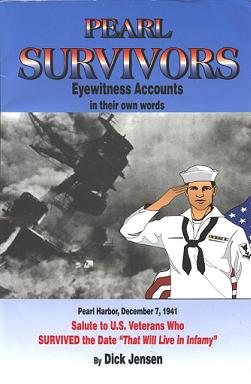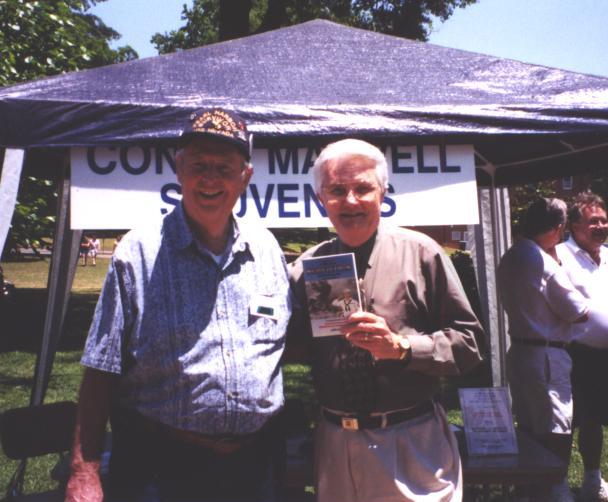Paul Morgan Adams US Marines USS Nevada |
Today's youthful residents at Connie Maxwell Children's Home in South Carolina may dream about visiting the faraway island paradise of Hawaii. But the trip for one alumnus of that faith-based facility turned into a hellish nightmare. On December 7, 1941, Paul Morgan Adams longed for the tranquility of the beautiful campus he left behind months earlier. Instead, Adams was aboard a battleship in Pearl Harbor targeted by Japanese bombs and torpedoes. Coxswain Adams came close to being on the ill-fated USS Arizona, but by "the luck of the draw" he was assigned to the USS Nevada. Here's how it happened, in survivor Adam' own words. On June 21, 1941, I enlisted in the US Marine Corps. At Salt Lake City, although I was a South Carolina native. I was in the Civilian Conservation Corps (CCC) at the time of my enlistment. Upon completion of boot camp in San Diego, California, there were 36 Marines selected from several recruit platoons for sea duty training. By September 1941, we had completed the sea duty training. It was at this time a battleship group consisting of the USS Arizona, USS Nevada and USS Oklahoma came into Long Beach with word that the Arizona needed seven Marines. Our sergeant asked for seven volunteers, and since all 36 men were anxious to leave the recruit depot training environment at San Diego and go to sea, all of us volunteered. He had us draw cards and then men with the highest draw would report to the USS Arizona. It was only a few days later that the remaining 29 of my group, including me, were placed on the Navy transport USS Wharton for transfer to the Marine barracks at Pearl Harbor. My wait for assignment to a ship's Marine detachment was short. On October 4, 1941, I, along with four other Marines, was transferred to the battleship USS Nevada, then at anchor in the harbor. Because I was a new member in the Marine detachment, and the fact that my last name started with the letter "A", I was assigned to mess duty for the month of December. On Sunday morning, December 7, I was in the scullery on the second deck washing the breakfast mess gear when the general quarters was sounded. I thought it was very strange that general quarters would be sounded on Sunday morning with most of the officers and senior enlisted men ashore. The word was immediately passed over the loud speaker, "Man your battle stations we are under attack this is no drill". I grabbed my clothing and shoes and hastily ran to my battle station at number seven 5-inch guns. While on the way to my battle station, I felt the ship jump like it was out of the water and heard an explosion. It was a torpedo that hit in the forward area of the ship on the port side at about the location of the number one main battery turret. We immediately started getting bomb hits. One bomb hit in the galley next to the number nine 5-inch guns, which was adjacent to my gun, killing four Marines and seriously wounding four other Marines. Another bomb hit the bridge, killing three more Marines. Of the 76 Marines on board the USS Nevada, sever died during the attack and 13 suffered wounds requiring hospitalization. Very shortly word was passed that the battleship Oklahoma was capsizing. Then I heard the loudest explosion possible, it was the USS Arizona. Our ship started to get underway while we were firing the 5-inch broadside guns at the attacking planes with a slim chance of downing one, but it kept us busy. As we got underway and started down the main harbor channel. We took five bomb hits in the forward area of the ship and were told that we had at least 14 near misses, creating huge geysers. Still underway, the Nevada emerged from the spray of bombs were her forward area and the main mast on fire. Fearing the ship would sink, we went aground, and two-yard tugs were sent to push the Nevada from the channel. We were pushed across the channel and beached across from the southern end of Ford Island. After the fires were brought under control, the dead and wounded were removed from the ship. We learned that a large percentage of the Arizona crew had been killed and that almost all of the Marine detachment had been killed, including seven Marines that I had trained with only five months before. We also learned that a large number of men had been trapped in the USS Oklahoma when it capsized. Thirty-two men were rescued from the Oklahoma, and I spoke with several of the men shortly after rescue at the Navy receiving barracks. There were two Medals of Honor and 15 Navy Crosses awarded to the Nevada's officers and men for their gallantry during the Pearl Harbor attack. This was the largest number of medals ever awarded on any ship in the history of the Navy. Of the 29 Japanese planes shot down, two were credited to the USS Nevada. After nearly 60 years, the vivid memories of this terrible day still give me nightmares. The horrible realization was that I could have been aboard the USS Arizona, or a bomb could have hit my gun as well as the one next to mine. At the time of his discharge from the Marine Corps in October 1945, Paul Adams had decided that his future would be in California. He took advantage of the GI Bill education benefits by enrolling in Long Beach City College in 1946. After earning a degree in 1950, Adams became a civilian employee of the Navy in property management. In 1954, he accepted a property management position with the aviation company that was to become McDonnell-Douglas from which he retired in 1989. In 2001, survivor Adams declared, "Due to some wise investments along with retirement pay and social security, my wife Gloria and I are able to enjoy a comfortable retirement in Cherry Valley, California". The gregarious former Marine will never forget Pearl Harbor, but he also remembers his roots, according to Dr. Ben Davis, the Vice President of Connie Maxwell Children's Home. "Paul Adams has always shown his gratitude for the care he received her by verbal affirmation, by staying in touch, by coming back 'home' for the reunion gatherings every other year, and through his financial support. In fact, Paul and his wife have established a trust that will benefit Connie Maxwell for years to come. We appreciate Paul for who he is, for his continuing love and support for this ministry and for his exemplary service to our nation during the Pearl Harbor battle and the ensuing war." |
Information provided by Paul Adams. |





Survivor Paul Adams (L) and Author Dick Jensen (R) June, 2002 |